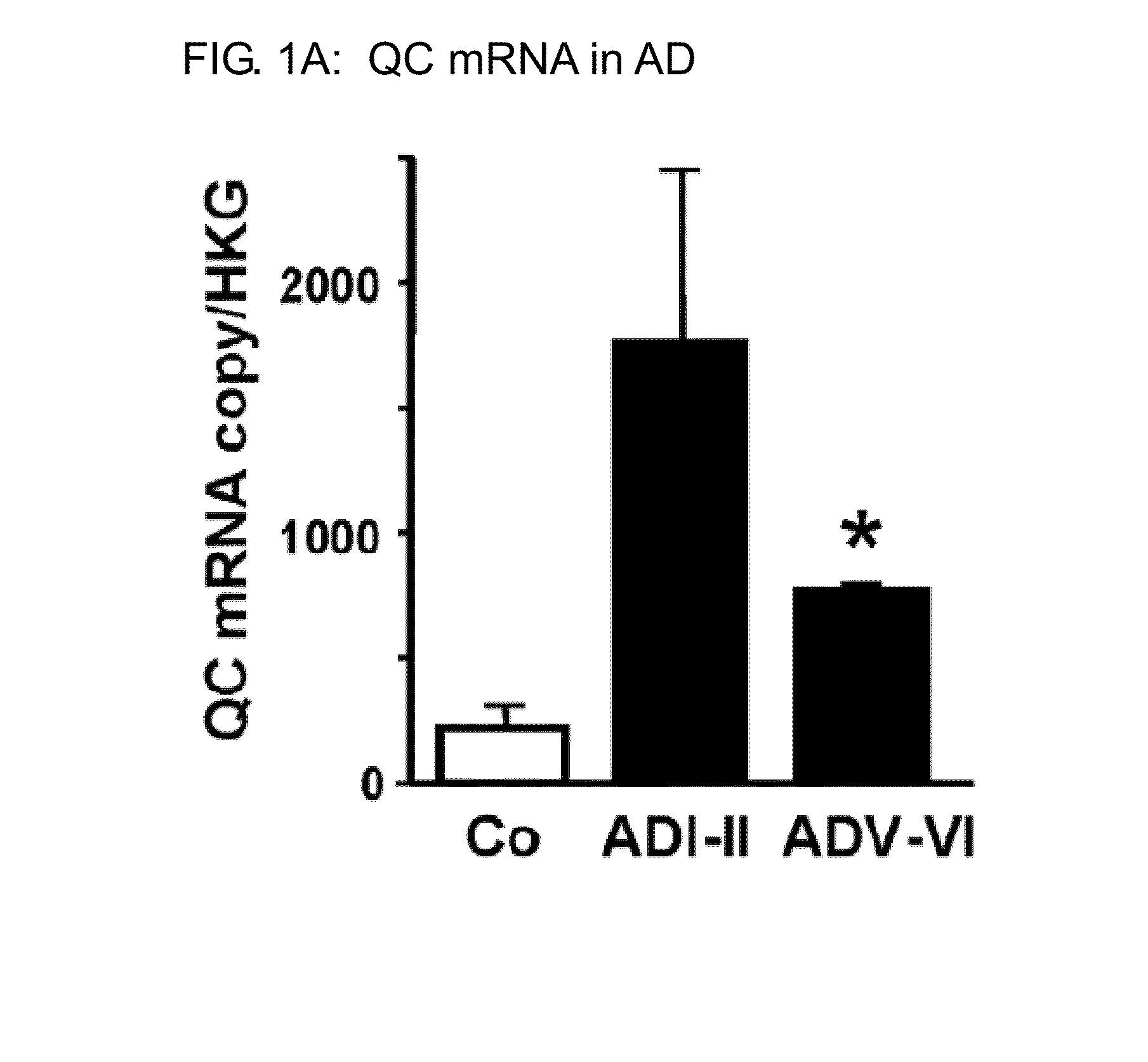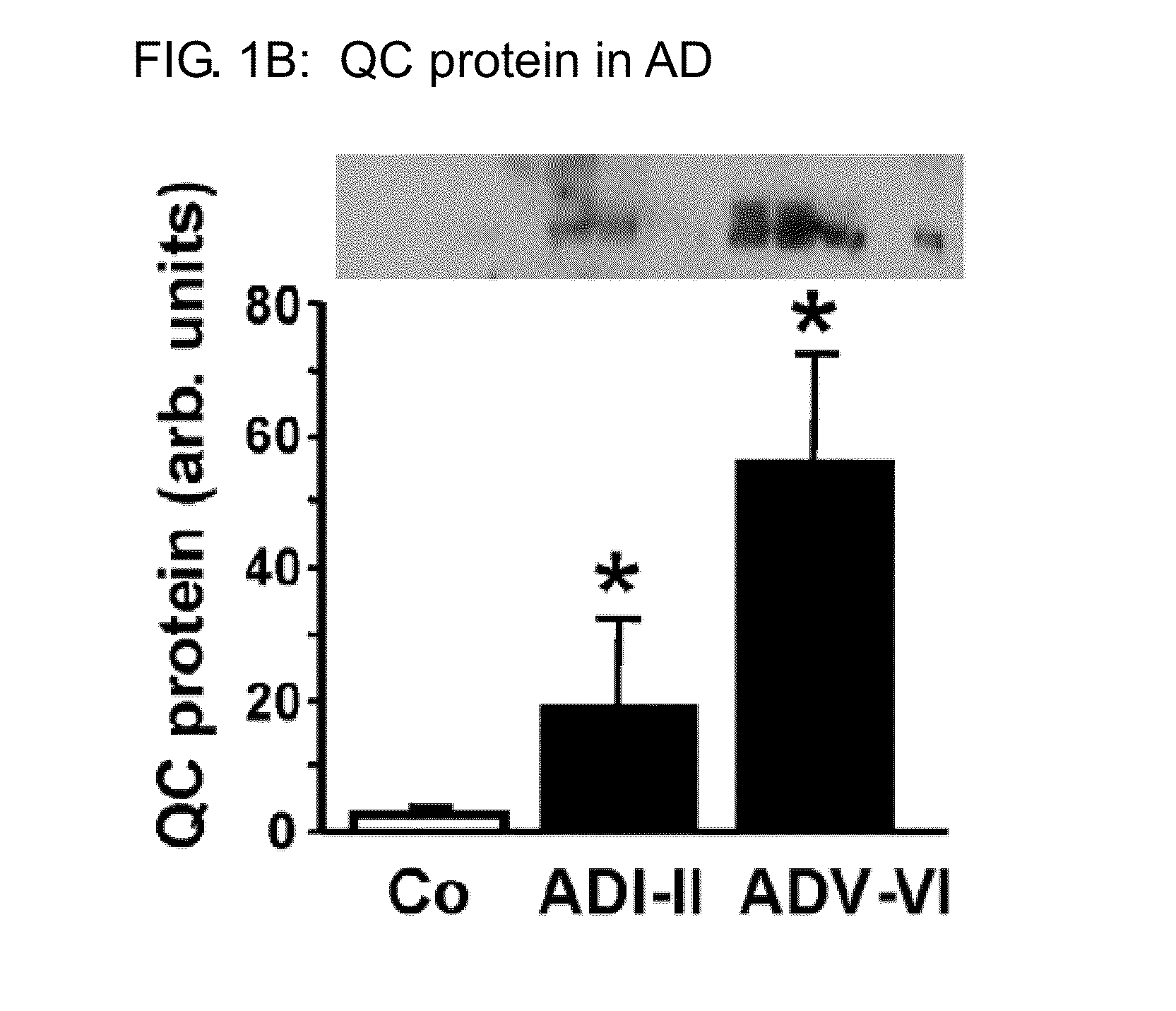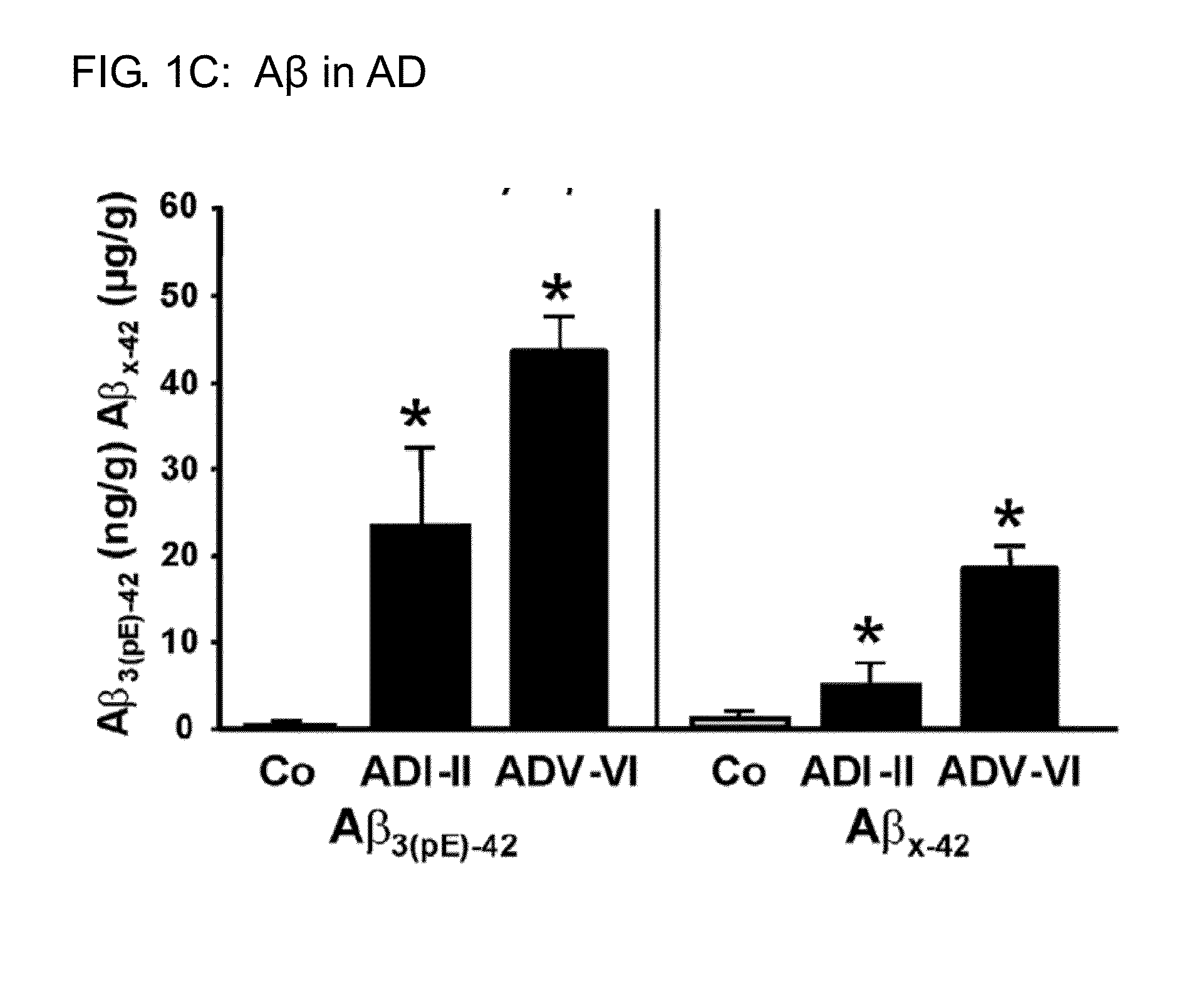Glutaminyl cyclase as a diagnostic/prognostic indicator for neurodegenerative diseases
a neurodegenerative disease and diagnostic/prognostic indicator technology, applied in the field of neurodegenerative diseases prediction, diagnosis and prognosis, can solve the problems of no satisfactory diagnostic marker for existing ad, no satisfactory clinical diagnostic marker for ad, and no known mechanism of pe-modification of a peptides, etc., to improve current clinical diagnostic assessment
- Summary
- Abstract
- Description
- Claims
- Application Information
AI Technical Summary
Benefits of technology
Problems solved by technology
Method used
Image
Examples
example 1
Formation of Aβ N3pE-42 And QC Expression In Vivo
[0096]A widespread QC distribution has been detected in mammalian brain with considerable expression in hippocampus and cortex. In order to assess whether QC expression in AD can be correlated with generation of Aβ N3pE-42, QC mRNA and protein concentrations were analyzed in human neocortical brain samples post mortem (see e.g., FIGS. 1a, b). Intriguingly, the inventors found an upregulation of QC mRNA and protein in AD brain samples, compared to normal aging. Moreover, significant concentrations of Aβ N3pE-42 were detected in samples from AD patients in contrast to non-demented individuals supporting a role of QC in generation of Aβ N3pE-42 (see e.g., FIG. 1c). On the other hand, ELISA analysis revealed high Aβ x-42 concentrations in normally aged control subjects and a much smaller increase at early AD stages (see e.g., FIG. 1c). This observation was corroborated by immunohistochemistry applying antibodies detecting total Aβ (4G8) o...
example 2
Determination of Gene Expression Rate of QC and CCL2 in Stimulated THP-1 Cells
[0101]Human monocytic leukaemia cell line THP-1 cells were cultivated in suspension (5×105 cells per ml medium) in RPMI-1640 (Rosewell Park Memorial Institute Medium 1640 (Invitrogen)) containing 10% FCS(=FBS, Fetal Bovine Serum (Invitrogen)) and 60 μg / ml gentamycin (Invitrogen) at 37° C. in 5% CO2 and 95% air humidified atmosphere.
[0102]To investigate stimulation effects of QC and CCL2 2×106 cells were seeded in 24 well plates (Greiner) into 1 ml culture medium without FCS containing different concentrations of lipopolysaccharides (LPS; Sigma). After 24 h incubation the medium was removed from the cells by centrifugation (5 min 300×g).
[0103]RNA isolation was carried out with the Nucleo-Spin® RNA II Kit (Macherey & Nagel) followed by the determination of the RNA concentration. Using the SuperScript™ II Reverse Transcriptase Kit from Invitrogen 1 μg RNA was transcribed into cDNA.
[0104]The gene expression ra...
example 3
Determination of the Specific QC Activity in Conditioned Medium of THP-1 Cells
[0105]5×106 THP-1 cells were seeded into 5 ml RPMI-1640 (Invitrogen) without phenol red and without FCS into 25 cm2 suspension flasks (Greiner) and stimulated with different concentrations of LPS (Sigma). After 24 h incubation at 37° C. and 5% CO2 cells were separated from the medium, which was reduced by centrifugation (4000×g) using U-Tube™ Concentrators 6-10 (Merck, Novagen) with a MWCO (Moleculare Weight Cut Off) 10 kDa to a final volume of 250 μl. The analysis of the protein concentration via Bradford method followed. The determination of the specific QC activity was realised by using a in-house established HPLC method. The results are shown in FIG. 3.
PUM
| Property | Measurement | Unit |
|---|---|---|
| pH | aaaaa | aaaaa |
| volume | aaaaa | aaaaa |
| Moleculare Weight Cut Off | aaaaa | aaaaa |
Abstract
Description
Claims
Application Information
 Login to View More
Login to View More - R&D
- Intellectual Property
- Life Sciences
- Materials
- Tech Scout
- Unparalleled Data Quality
- Higher Quality Content
- 60% Fewer Hallucinations
Browse by: Latest US Patents, China's latest patents, Technical Efficacy Thesaurus, Application Domain, Technology Topic, Popular Technical Reports.
© 2025 PatSnap. All rights reserved.Legal|Privacy policy|Modern Slavery Act Transparency Statement|Sitemap|About US| Contact US: help@patsnap.com



